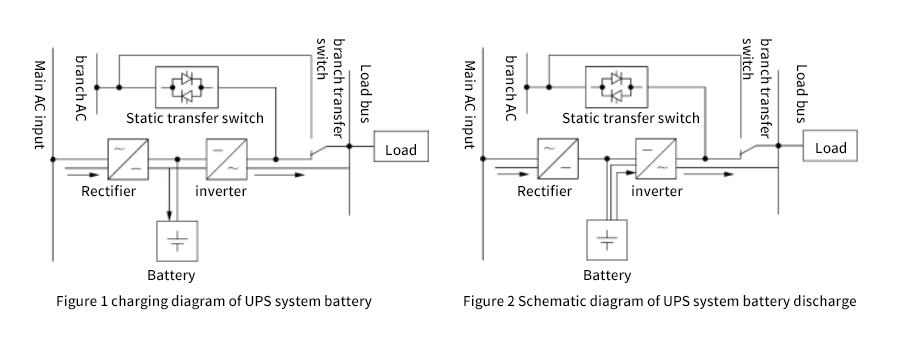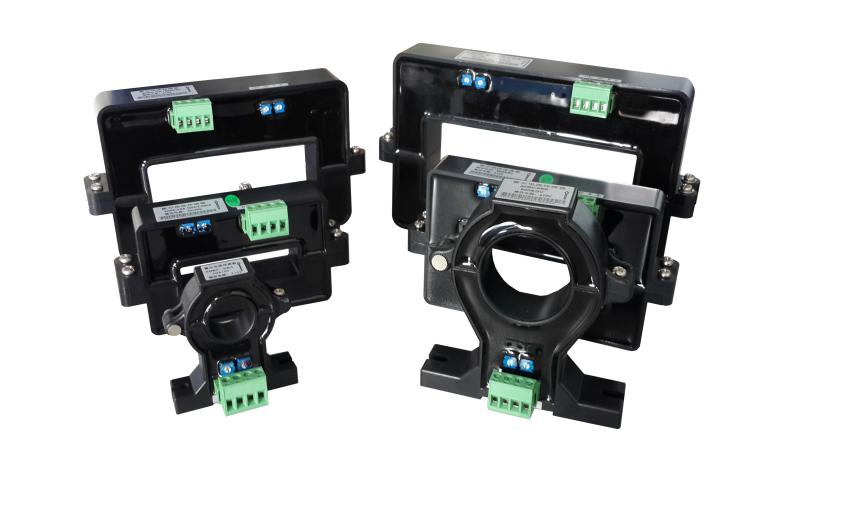Application of Hall current sensor in remote monitoring of continuous charging of UPS battery
Abstract: in view of the phenomenon that the floating charging of UPS battery of unmanned platform is too high for many times, the structure and working principle of UPS system are introduced. Through the application of Hall current sensor and DCS configuration, the remote monitoring of floating charging of UPS battery and abnormal current fault alarm are realized, which promotes the automatic management process of unmanned platform.
Key words: Hall current sensor; UPS; Battery; DCS
1 Overview
An offshore oil unattended production platform is equipped with a set of 20KVA UPS device. Since the platform was put into operation, the floating charge current of UPS battery has been too high for many times, causing the battery to be in an abnormal high temperature state for a long time, which has a great impact on the normal use of UPS, seriously affecting the power supply safety of the oil production platform, and may cause equipment damage or even fire, and there are very large potential safety hazards. In order to avoid potential equipment and safety hazards caused by this problem, large human and material costs have been invested, the inspection frequency of unmanned platforms has been increased, and the floating current value of the battery has been regularly detected to judge the working state of the battery. Through technical means, the floating charge current signal of the battery is remotely transmitted to the DCS of the central control room, which is convenient for real-time monitoring of the current value and abnormal current fault alarm.
2 Structure and working principle of UPS
2.1 structure of UPS
The UPS device equipped on the platform is located in the emergency switch room on the mezzanine deck of the platform, with a capacity of 20kV · A. It consists of two UPS cabinets, one bypass power cabinet, one load distribution cabinet and a battery pack composed of 170 nickel cadmium batteries. The battery pack is installed in the battery room, and its main components include rectifier, inverter, static transfer switch, battery and other parts.
1) Rectifier. It is an element that converts alternating current into direct current. The rectifier is controlled by its internal microprocessor to rectify the alternating current from the distribution cabinet into high-quality direct current, which is filtered and then supplied to the inverter and float charge the battery pack.
2) Inverter. Contrary to the function of the rectifier, the inverter converts the DC converted by the rectifier into AC, and its power source comes from the rectifier or battery. The inverter current provides the load with the required high-quality, durable and stable AC sine wave voltage.
3 )Static transfer switch. The function is to prevent the instantaneous power supply interruption and relay contact arcing, ignition and other phenomena caused by the switching between normal current and bypass current. After the static switch is adopted, the transition time of the transfer switch is greatly reduced within 0.2ms.
4) Battery pack. In case of failure of the main power supply or rectifier, the storage battery works as a backup power supply and supplies power to the load through the inverter.
2.2 working principle of UPS system battery charging and discharging
The charging and discharging process of UPS system battery is also the process of energy conversion. When the grid voltage works normally, the electrical energy is converted into the chemical energy of the battery. The main power supply supplies power to the load and charges the battery. The charging diagram of UPS system battery is shown in Figure 1; In case of sudden power failure of the main power supply, the chemical energy of the battery is converted into electrical energy, and the battery discharge provides power for important loads to reduce the impact on production. The battery discharge diagram of UPS system is shown in Figure 2. After the battery is fully charged, its capacity is enough to supply power to all electrical equipment powered by UPS for 30min at the same time.

3. Application of Hall current sensor in remote monitoring design of floating charge current of UPS battery
3.1 working principle of Hall current sensor
Hall current sensor is mainly applicable to the isolation and conversion of AC, DC, pulse and other complex signals. Through the Hall effect principle, the transformed signals can be directly collected by various acquisition devices such as DCS, ad, DSP, PLC, secondary instruments and so on. It has the advantages of fast response time, wide current measurement range, high accuracy, strong overload capacity, good linearity, strong anti-interference ability and so on.
3.2 technical parameters of Hall current sensor

|
Parameters |
index |
||
|
Hall open / Hall closed |
Hall |
||
|
Output |
Nominal value |
voltage:±5V/±4V |
current:4~20mA |
|
|
Zero offset voltage (current) |
voltage:±20mV |
current:±0.05mA |
|
|
Offset voltage (current) drift |
voltage: ≤±1.0mV/℃ |
current:±0.04mA/℃ |
|
|
Linearity |
≤0.2%FS |
|
|
Power |
DC±15V |
DC 24V |
|
|
Bandwidth |
0~20kHz |
|
|
|
response time |
≤5us |
≤1ms |
|
|
Compressive strength |
Ac2500v power frequency withstand voltage is allowed between input, output and power supply |
||
|
Class |
1.0 |
||
|
Environment |
Temperature |
Working:-25℃~+70℃;Storage:-40℃~+85℃ |
|
|
|
Humidity |
≤95%RH,Places without condensation and corrosive gas |
|
|
|
Altitude |
≤3500m |
|
3.3 Hall current sensor connected to DCS
Hall current sensor can directly convert the measured main circuit current into 4 ~ 20mA DC current signal output in linear proportion. A Hall current sensor is installed at the lower port of the battery circuit breaker of the ups distribution cabinet in the emergency distribution room, which can convert the floating charge current of the battery into a 4 ~ 20mA DC current signal that can be accepted by the DCS analog card.
Define the newly accessed 4 ~ 20mA analog input channel in the upper computer of the central control room to configure the parameter range, alarm value and historical trend, and assign it to the corresponding controller. Use the picture configuration software to configure the parameters, pictures and graphics, and install the program to realize the remote monitoring function of the central control room of the floating charge current of UPS battery. Finally, by comparing the floating charge current value of the battery measured on site with the floating charge current value displayed on the DCS man-machine interface, it is confirmed that the DCS collected value is accurate.
3.4 application effect
By adding Hall current sensor, the collection of UPS battery floating charge current of unmanned platform is realized, and the remote online monitoring of battery floating charge current by DCs is realized by laying cables and configuring the central control room, which strengthens the management of important equipment of unmanned platform.
The operation data of battery floating current is remotely transmitted to DCS, which makes it convenient for the personnel on duty in the central control room to monitor the battery floating current value at the first time. At the same time, by setting the parameter alarm value, when the battery floating current is abnormal, an alarm will be sent, so as to get information at the first time and leave enough time for emergency treatment. The project effectively reduces the inspection frequency of the unmanned platform, reduces the human and material costs of the management of the unmanned platform, avoids the battery damage caused by the abnormal floating current and even the platform fire, and promotes the automatic management process of the unmanned platform.
4. Conclusion
The Hall current sensor is used to convert the floating charge current of the battery into 4 ~ 20mA current signal that can be accepted by the DCS analog quantity card, so as to transmit the floating charge current of the ups battery to DCS remotely. The operator can observe the floating charge current value quickly and intuitively on the operation screen of DCS. The project has a strong theoretical basis and hardware condition foundation. It not only has very high application value, but also has broad promotion significance, which provides practical reference experience for the on-line monitoring of field equipment in the future.
Post time: Aug-17-2022




